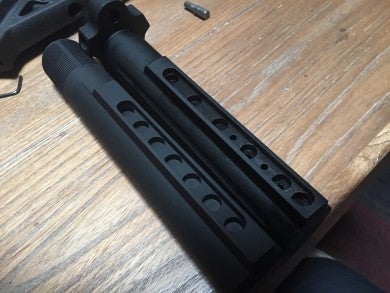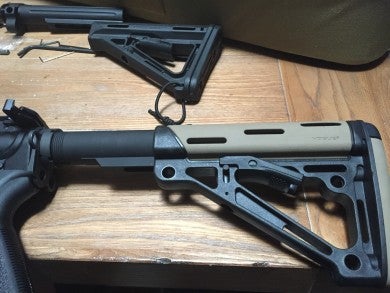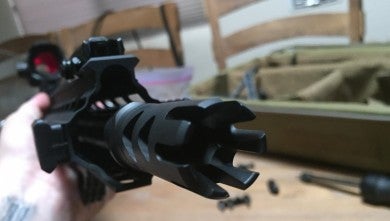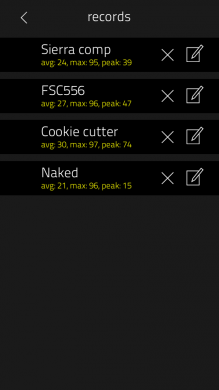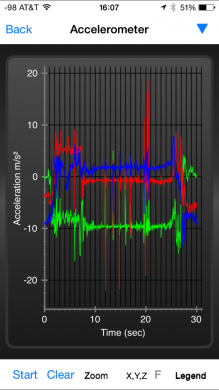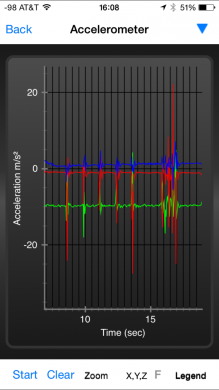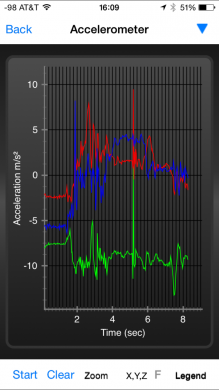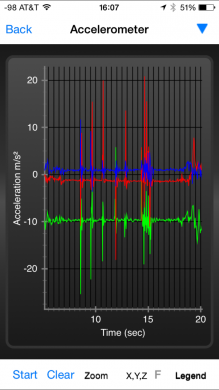Strike Industries sent me a new comp (the Sierra Comp) that they made in conjunction with Victor Lopez (of Sierra Element Tactical Firearms Training). He worked on the design with Strike for over a year.
The unique design of the triangle ports allow gas to escape the weapon in conical shape. The energy from the recoil is directed back to the shooter dramatically reducing muzzle rise. The prongs on the front assist with some flash hiding. Also, the prongs are sharp, durable and can be used as an impact device if need.
The Sierra Muzzle Device is designed to mitigate barrel rise during operation. This device will keep your muzzle from climbing during firing that will in return make follow up shots faster and more accurate. The seven prongs on the end of the compensator are designed to protect the muzzle crown.
Strike Industries also sent me their 7-Position Buffer Tube. I was able to easily install it (and the comp) on my Primary Weapons Systems Modern Musket (once I got past the copious thread lock that PWS used). Note: watch out for that silly Takedown Pin Detent Spring–I launch it across the room every time. I am quite seriously considering doing this mod.
The question then becomes, how do you do a review of a muzzle device and buffer tube/receiver extension. A buffer tube is a fairly simple component, and it is hard to differentiate between different models from a functional standpoint. Is it machined well? What materials were used (lightness and strength)? Does it allow the stock to smoothly adjust and does it allow the stock to hold that adjustment? Is it “mil-spec”? And really, in my opinion, the last two are the most important. Mil-spec hopefully ensures it will fit my lower, and a buffer tube that doesn’t interface well with stocks is useless.
Buffer Tube
The Strike 7-position tube meets all of the above questions. I ran it using the Hogue Overmolded Buttstock which Nathan wrote about in July. The novel feature of the Strike entrant in to this component is that it has, well, seven stops to use (just like it’s name suggests). The detents are a little closer together than a six-position tube. Other than that it serves it’s purpose. I rarely adjust my buttstock position–I normally run my rifle in the most collapsed position. With the ability to set an optic nearly anywhere on the top rail, I set it where I get the appropriate eye-relief with the stock collapsed. I suppose the utility is more evident for someone else picking up my rifle and shooting. Myself, I’m currently too crude on my setup to appreciate the ability to finely adjust my buttstock.
Muzzle Device
So, regarding reviewing muzzle devices, someday it would nice to have a follow on article to Andrew Tuohy’s (of Vuurwapen Blog) muzzle device comparison. Or perhaps a site/featured article series that maintains an ongoing list of devices with assessed metrics.
The Truth About Guns recently did a comparison test with a bunch of devices, but what they were measuring was recoil. While the results are interesting, they are not terribly relevant in my opinion. Rearward force is going to be absorbed by the buffer and the shooter, and had they put 180 pounds of weight in the sled, I believe the results would have be drastically different. I think the more important issue related to use of muzzle devices is muzzle rise compensation specifically for compensators (ability to hide flash for flash hiders, sound suppression for suppressors, and whichever for combination devices). Basically muzzle devices should be evaluated based on their ability to mitigate the factors they are advertised as mitigating.
Testing
Unfortunately getting access to the professional equipment necessary to do the same testing Andrew did is challenging. For instance, he used a Bruel & Kjaer 2209 Impulse Precision Sound Level Meter which runs in the thousands of dollars. High speed cameras are also pricey. So unless you know someone that has them (or you are personally in a position to afford such equipment), duplicating the tests he did are going to be a challenge.
So, what can we do? Fortunately the lay person has access to a number of inexpensive apps for common smart phones. Are these perfect? Nope. But if you use the same apps on the same device in relatively the same conditions, you should be able to have some repeatable tests. And if you compare different devices using that process, you should be able to have a relative idea about how they perform.
For this process I am going to use an iPhone 6 with the apps “db Meter” and “SensorKinetics“. I do have a GoPro so I can use that for filming. I will run a baseline with no muzzle device, the Primary Weapons Systems FSC 556 that came with the Modern Musket, and also with the Cookie Cutter that I reviewed a few months back (just to give some variation). And I will fire super-consistent high quality Wolf ammo.
Muzzle Flash
I didn’t do a flash test like the one on Vuurwapen blog. From a practical standpoint, the main device I was testing (the Sierra Comp) is a compensator, not a flash suppressor (though it does have some flash suppression ability). The only device I ran that is meant to do flash suppression is the PWS FSC556.
Sound Pressure Levels
I drew a box in the dirt to stand in, and put my iPhone about a 3 feet to right in the back of my vehicle (roughly 4.5 ft up). As Andrew posted, the military standard is a meter to the left and 1.6 meters up (5 feet, 3 inches). I assume that is just to stop the ejected brass from hitting the device (which during my test conveniently landed in the back of my jeep).
The results I got were:
Sierra Comp: 95 dB
FSC556: 96 dB
Cookie Cutter: 97 dB
Naked: 96 dB
The results I got don’t really line up with the results Andrew got using professional equipment (the two devices I had in overlap were a naked muzzle and the PWS FSC556). His results were 158 dB on the naked and 167 dB on the FSC556. But then again, none of the devices I tested are sound suppressors… 🙂
Recoil Control
You can see how I “measured” this in the video–I gripped my iPhone against the forward rail with the sensor logging app running. The results are below. You can see definition of the 5 single shots followed by the rapid shots in all but the Sierra Comp. I have no explanation for that anomaly. Otherwise there was definitely movement in all axes. Red is “X”, in line with the muzzle, green is “Y”, and blue is “Z” (this is rotated 90 degrees from the app standard axes due to rotation of the phone body for ease of holding it).
In the videos I did a simply overlay with a dotted line along the axis of the barrel to be used as a reference. There was not really any significant muzzle rise (the worst being seen when I did the “rapid” fire).
Subjective
I ran the Sierra Comp for three 3-Gun matches. I didn’t really notice a degradation of my performance–but I am pretty terrible in any case :). Joking aside, I didn’t really notice any massive flash obscuring my vision, nor did I feel any horrendous back blast (nobody complained either). The sound was not noticeably different.
On the short range matches I ran, I hit all of my targets. During one of the long range matches I missed two of my targets (at ~250 meters and ~480 meters)–but I’m chalking that up to my optic (Lucid HD7 with no magnification), and not the muzzle device.
I DO like the look of the Sierra Comp, and I will continue to run it on my rifle. It is not distracting, and there was not really any flash (the description indicates that the prongs on the front help with that).
Regarding the Receiver Extension, I never adjusted my stock length. It never got in my way, and I would err on the side of having more adjustment options than fewer, so that factor is nice.
Observations
I would find a way to mount the phone directly to the picatinny (or KeyMod) for better consistency of the sensor data, and I would probably run the decibel test from that location as well.
Ultimately I think it comes down to real world. Do you have good basics? Solid stance/platform? Good grip (of choice)? Good sight picture? Do you tense when you need to tense, relax when you need to relax? I think the use of a muzzle device to compensate for rise is less important than something that mitigates sound and/or obscuring flash (where those factors are important). A well designed compensator may help during competitions to shave off some critical time, but for the average shooter, I’m not sure it makes a big difference.
Please share your thoughts below. I know this is one of those topics where a lot of people have a “dog in the fight”, so let’s get a lively (but civil) discussion going as to use of muzzle devices, pros/cons, etc.
Sierra Comp
- Length: 2.6 inch
- Outer Diameter: .825
- Weight: 3.8 oz
- Materials: Steel
- Color: Black
- Threading: at 1/2″x28
- MSRP: $60.00 (product link)
AR Receiver Extension with 7 Positions
- 7-position MIL-SPEC diameter buffer tube
- Extension end plate with QD swivel adapter
- Fits onto any standard AR15 receiver.
- Finer length of pull adjustment.
- MSRP: $32.95 (kit), $24.95 (just the tube) (product link)
 Your Privacy Choices
Your Privacy Choices

